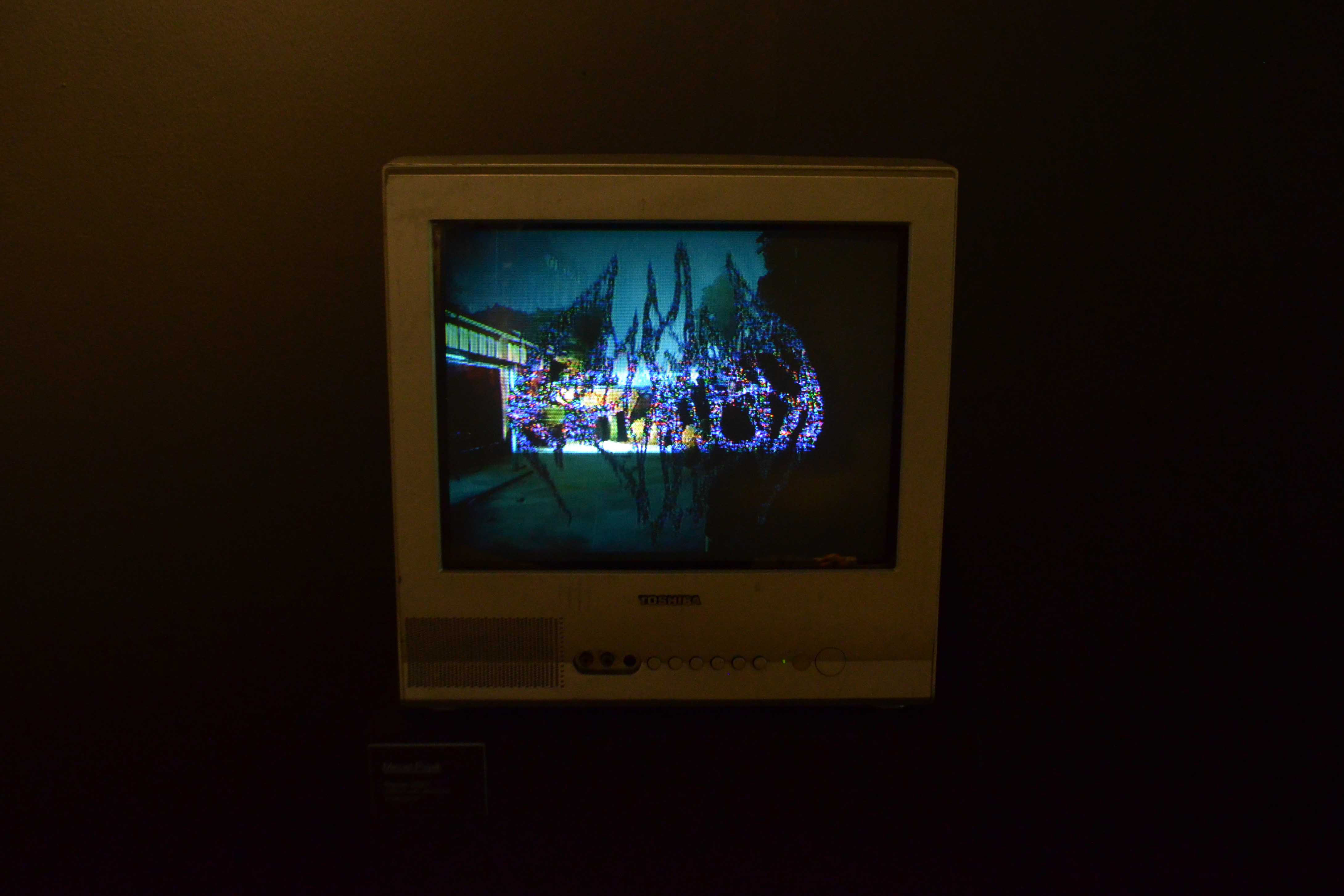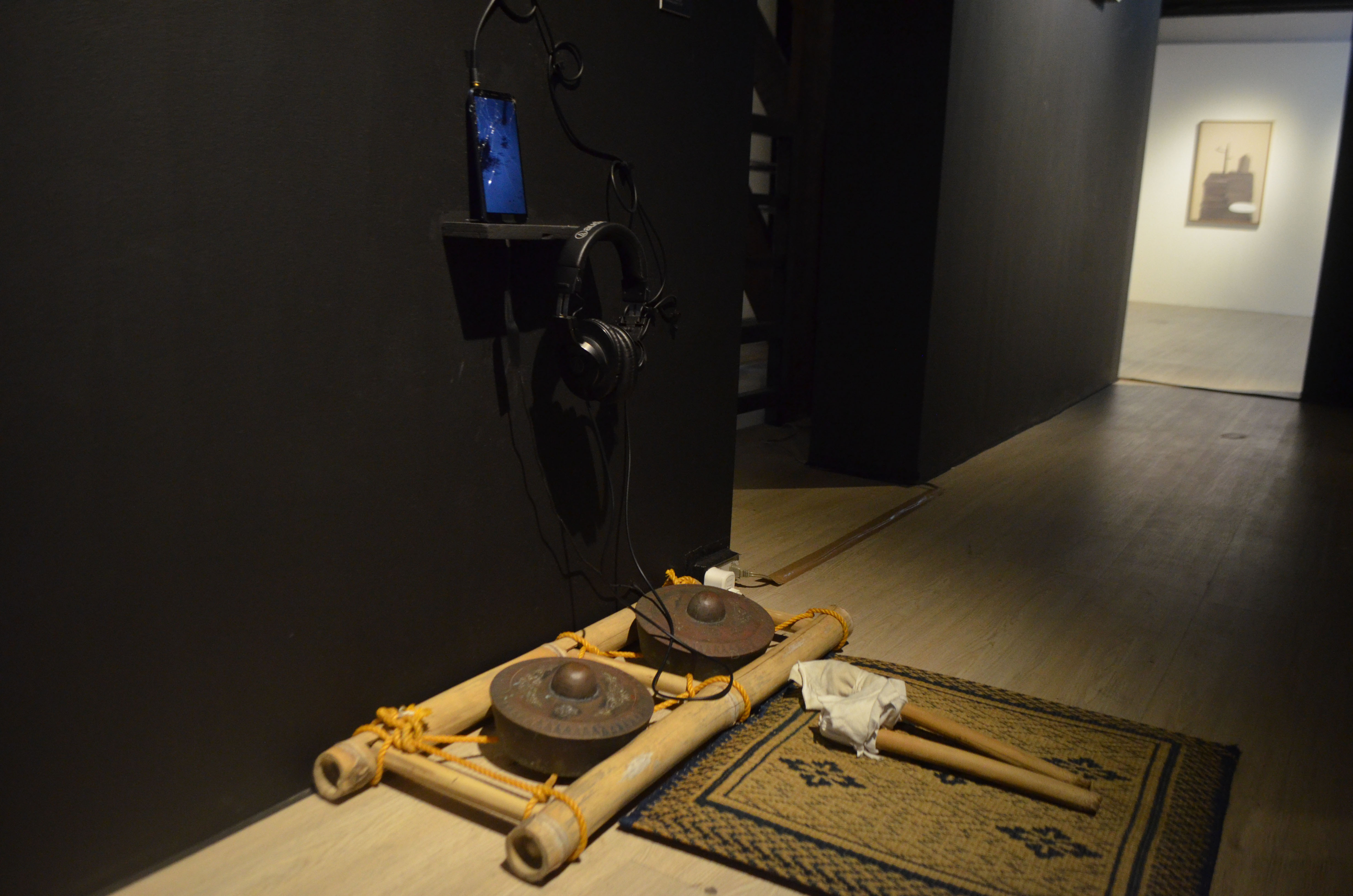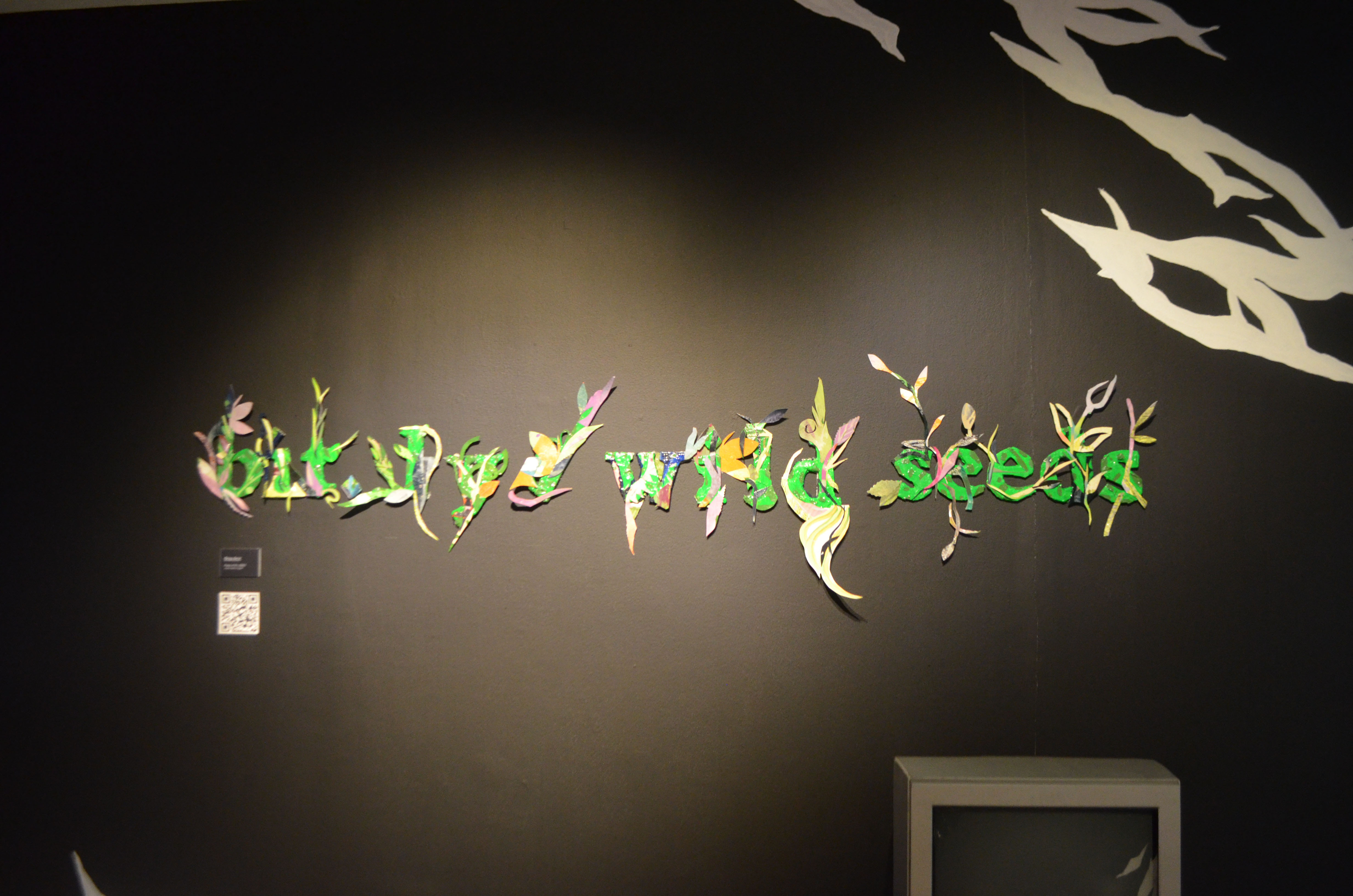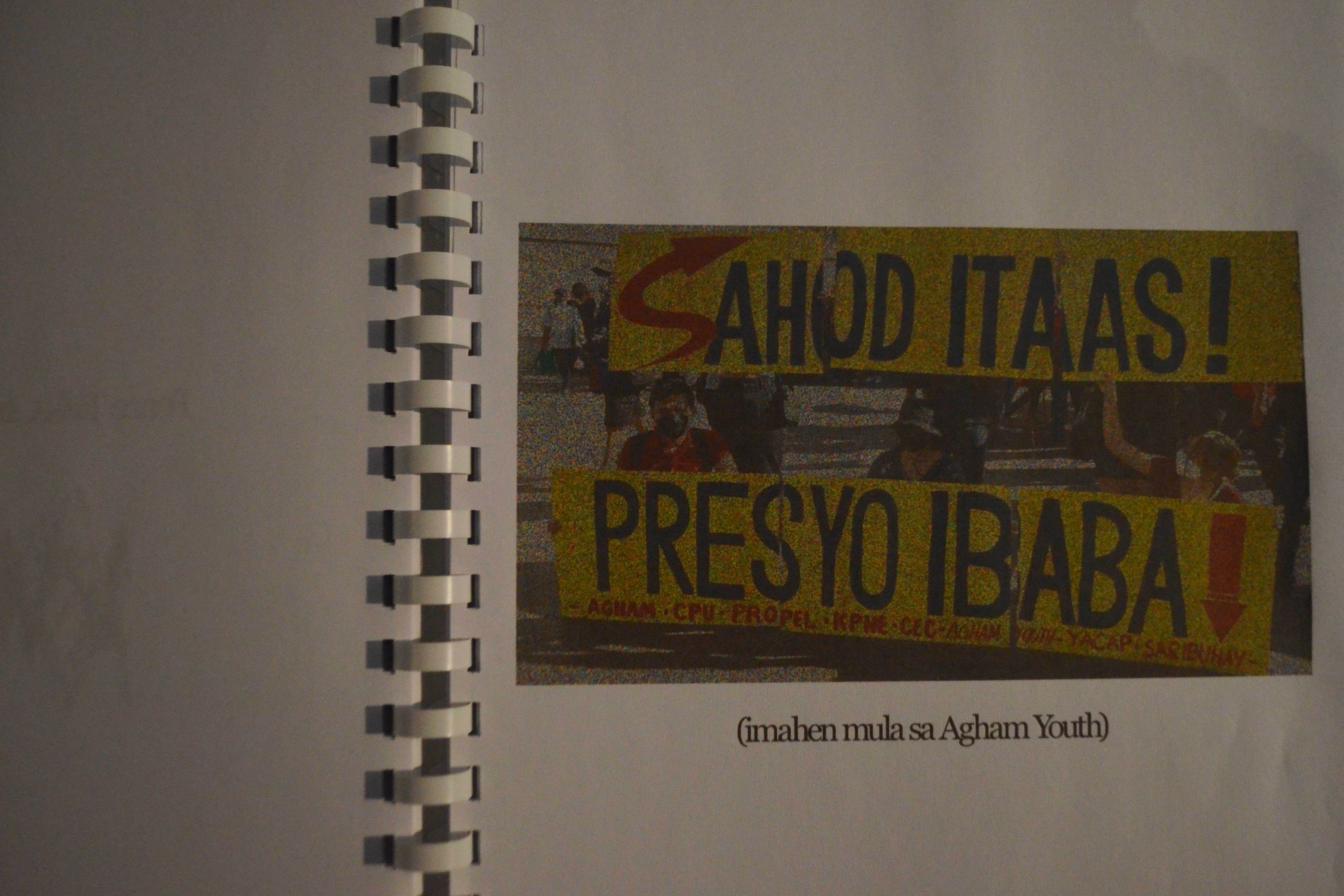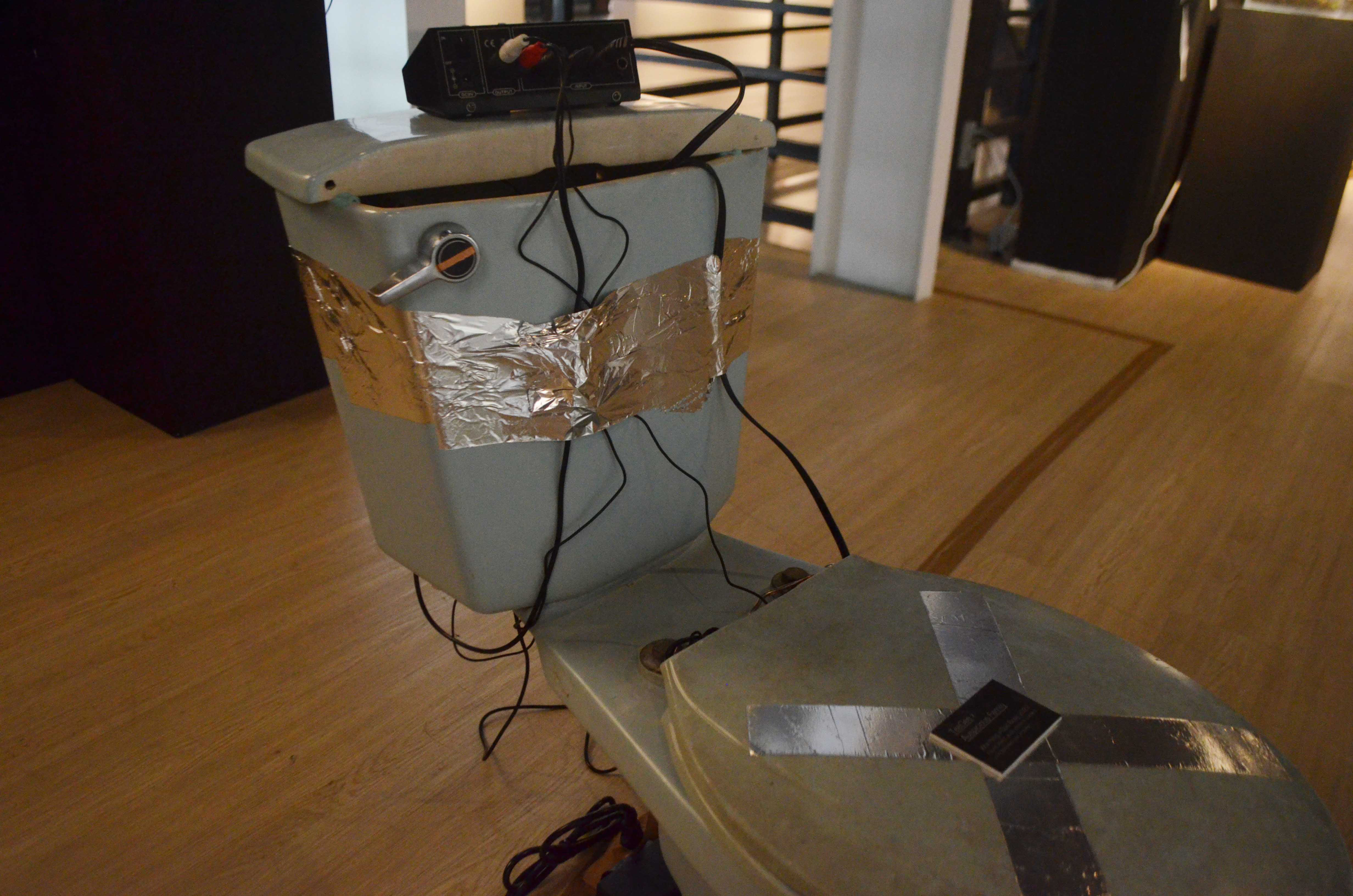There is an irony in the act of listening as it provokes without contact. We do not touch, yet we may be moved. Listening requires distance but at the same time implies a longing for embodied connection. In lieu of the absence or impossibility of close bodily contact, is sound, then, a mere substitute for what the body cannot reach towards or express? Perhaps it is more complex than that. There are things we are only capable of expressing with distance, and we reveal much more than we let on in this very distance—that space of apparent absence.
Itos Ledesma writes of Guided Agitation, ongoing at Gravity Art Space, as an artistic inquiry that “collapses distance between object and observer” through audiovisual media and various artists' experimentations on sound to evoke a plurality of experiences that entangles bodies sonically from different worlds. While the visual occupies space, sound occupies time. Thus, the distance Ledesma speaks of here becomes expanded into one between spaces and times, between vast worlds of human experience. In Guided Agitation, the absence implied by this distance turns, as the viewer experiences each work, into something very much present (in both senses of the word as used in relation to space and time—as in both there, as well as current).

Opening with Erick Calilan’s ‘Long Distance’ with a nostalgic piece of home through its installation of a rotary phone and an old-fashioned lamp sat atop a wooden desk, Guided Agitation introduces the act of listening as something that can be so personal. When the viewer picks up the phone, a recorded call plays, suggestive of a long distance conversation between family. Above the installation hangs Gino Javier’s blueprint work ‘Sa Manlulupig, Di Ka Pasisiil’ depicting vacationers a little away from the shore—the photo’s own long distance shot of the shoreline seeming to further expand the ‘long distance’ already evoked by Calilan’s work. Turning the installation into a homely space, the two works espouse a longing for something distant across space and time as they come together to bring a sense of nostalgia through a record of memory.
In the works of Matthew Salazar, Miguel Puyat, Nichole Fern, and Lui Tan, this longing is expounded on through a series of introspective works using audio and visuals. While Salazar’s ‘Sana pwede na lang magteleport’ offers a slice of life through a mundane view on bike overlaid with music on slight reverb, Miguel Puyat’s ‘Repose’ features gritty visuals overlaid with noise and the incessant sound of rain. Here, the repetitive character of mundane audiovisuals makes for an introspective mood that at the same time longs for an other to connect to by letting itself be heard. Nichole Fern’s diptych ‘Torn in Two’ depicts an illusively digital image by rendering in paint a window-like square on solid red background (suggesting a cropped out red square— as if something had been digitally subtracted or taken from the original image) and a QR code that links to an edited sound excerpt from a 1992 track by experimental rock act Swans. While Fern makes a musical reference, Tan composes his own in ‘drowning in displacement’ which lyrically expresses a sense of alienation. These two works seem to lament the self’s sense of being split from an other by longing to be heard—a reaching out of sorts aiming to put back together what has been ‘torn in two’.
More socioculturally oriented works in Guided Agitation include Victoria Yujuico Keet’s ‘Noodle’ and ‘MEDIA NOCHE, COSTUME PARTY AT SAYAWAN, PINAGHAHANDAAN SA TONDO, MAYNILA’, and ‘Busong’ by Miguel Nuñez. Keet’s audiovisual works overlay various food customs both local and foreign in an ethnographic documentary-like manner, thus collaging cultures and foregrounding their differences as the snippets of audio and visuals digitally clash against each other. Meanwhile, the work of Nuñez plays like a snap documentary of what seems to be a provincial ritual both eerie and mystical. What is revealed here is the sense of embodied collectivity embedded in the very act of listening that seems to bind people together through similarities in their sense experiences.
Expanding on the idea of sonic space as shared by an embodied collective are the more political works of Brisa Amir, Uri Deger, and Waki Badz. While Amir’s is an experimental soundscape that introspects on space as expanding and shared—the audio work making for a dreamy stream of consciousness-like sonic experience, Uri Deger’s ‘Kanta Para sa Patay’ and Waki Badz’s ‘Improvised Syntax’ present the sounds of political protest. As Amir’s ‘Yoga sketch’ ponders space as ever-expanding and mutable, the latter two digitally echo collective calls for change—an expansion of space that politically asks "for whom?"
Artworks by Brisa Amir (left) and Waki Badz (right).
While technological manipulation of audiovisuals is a recurring feature of the works in Guided Agitation, pieces such as Kean Barrameda’s V0caLic.:sequenc3/’, TeeGee and Auspicious Family’s ‘Warming a Cold Body’, 1111’s ‘Audience without an Audience’, and Kiel Rubis’ ‘Hesitation Before Birth’ more blatantly incorporate a play on the digital through cold, mechanical sounds manipulated by human hands. In ‘V0caLic.:sequenc3/’, we find a cacophony of digital sounds over an animated visual reminiscent of corrupted error screens.‘Warming a Cold Body’ features a found object technologically rehashed to produce grating sounds upon the viewer’s manipulation of the controller box attached to it. Kiel Rubis embraces technological disobedience through an experimentation on programming, electronics, and sound that projects—through a multi-channel video—the viewer standing before the work onto the screen of a CRT TV. 1111’s ‘Audience without an Audience’ makes use of encrypted music to produce a synthlike and playfully introspective instrumental. Both incorporating digital experimentation, these works—similarly as ‘V0caLic.:sequenc3/’ and 'Warming a Cold Body’—hide behind their heavily technological facade a human longing to be heard. As Idris Perry writes in the introductory notes of Franz Kafka’s The Castle to which Rubis makes reference in ‘Hesitation Before Birth’, only a correspondence completes one’s life of loose ends and imperfect experimentations. In other words, all these works are but hesitations: attempts at being heard—and it is only a response from the other who listens that would tie these loose ends, thus finally making a connection.
Tying loose ends is also significantly revealed to be a tying of different worlds and times. An audiovisual installation that uses several smartphones connected via VPN to different servers around the world to play a recording of frog calls, Levi Masuli’s ‘Mga Palaka sa Gilid ng Highway’ becomes an experimental harmony orchestrated by varying times and connections, simulating sonic correspondences between those who reach out and those who let in.
There is something cinematic about the collapsing of distance through what Ledesma calls ‘the process of letting the outside in’ that occurs in Guided Agitation as it foregrounds the experience of sound—something that is essentially temporal or written in time. These auditory and audiovisual works may be played back like a time capsule that presents itself as present each time it is returned to. And in each instance of being repeated, the entangling of times or correspondence with the present is never the same. A repetition is never truly a repetition, but the birth of new worlds through newer connections between those who reach out and those who listen.
Guided Agitation continues at Gravity Art Space in Quezon City until March 11. Curated by Jose Olarte and Jett Ilagan, the show features the works of lui tan, Brisa Amir, Miguel Puyat, Levi Masuli, Kean Barrameda, Matthew Salazar, Miguel Nuñez, Victoria Yujuico Keet, TeeGee, Auspicious Family, Erick Calilan, Kiel Rubis, Uri Deger, Toti Santiago, Gino Javier, Nichole Fern, Waki Badz, and 1111.
Pie Tiausas (he/they) is a nonbinary illustrator and MA Art Theory & Criticism student at the University of the Philippines Diliman. Pie loves anime, psychological horror, and pop punk.
Images courtesy of the writer.

